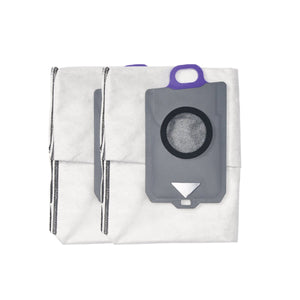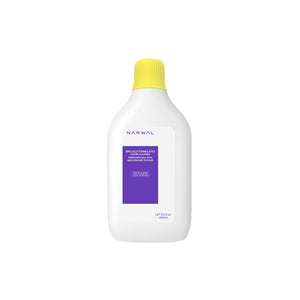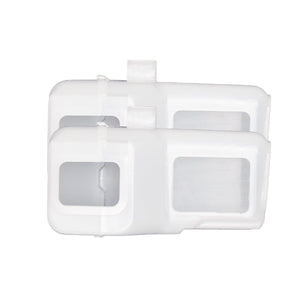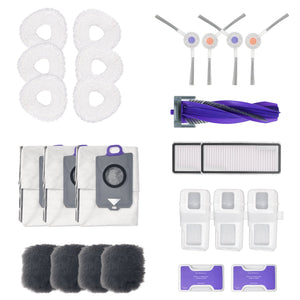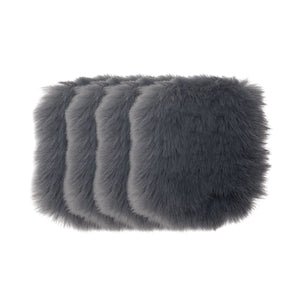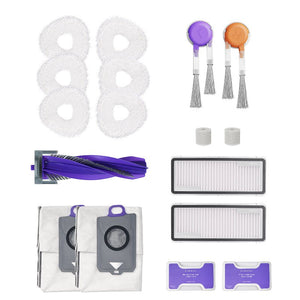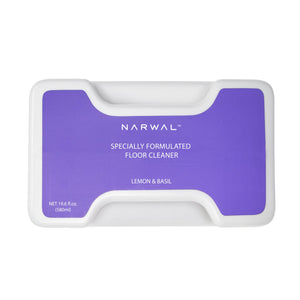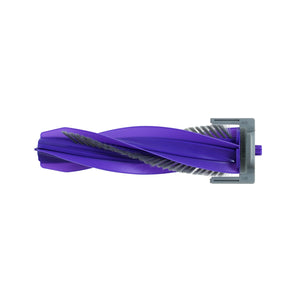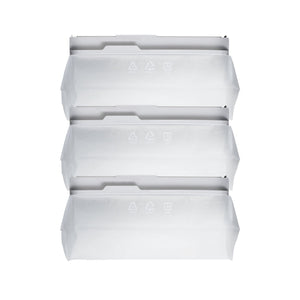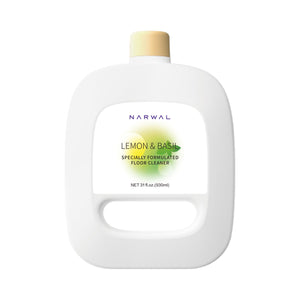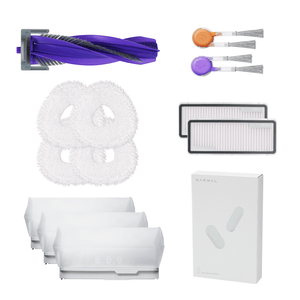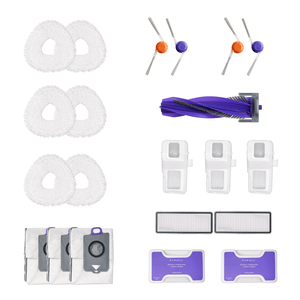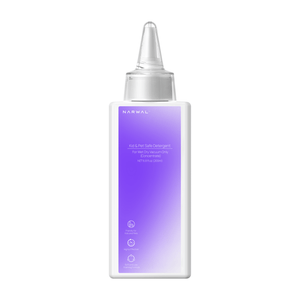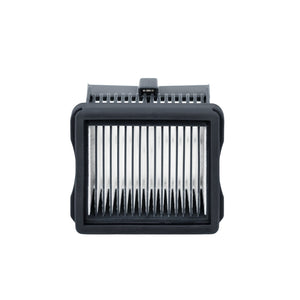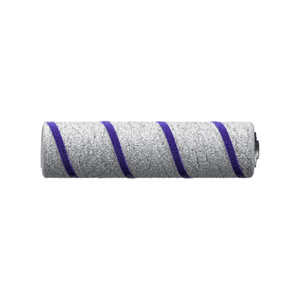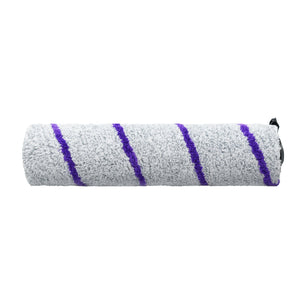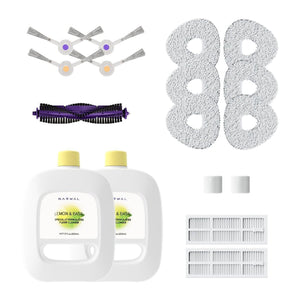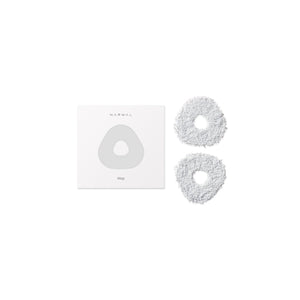Dust mites are one of the most common allergens in the home, and in order to effectively combat dust mites and reduce their impact on health, it is important to choose efficient cleaning tools. Robot vacuum and mops combine vacuuming and mopping in one, providing an ideal solution for the modern household. In this article, we'll explore the challenges of removing dust mites and how to use a robot vacuum mop to help create a healthier living space.
The Health Hazards of Dust Mites
Dust mites are frequently encountered in bedding, carpets, and furniture upholstery. They survive by consuming dead skin cells and flourish in warm, damp conditions. While dust mites themselves aren't harmful, their waste products and secretions can trigger allergic reactions, including:
- Nasal congestion and sneezing
- Itchy, watery eyes
- Skin irritation
- Asthma or difficulty breathing
These issues are particularly troublesome for people with allergies or asthma. Regular cleaning is essential to reduce dust mite buildup and maintain good air quality at home. However, traditional cleaning methods often fail to fully eliminate dust mites, which is why using advanced cleaning tools like a handheld vacuum mop is essential for tackling the problem effectively.
The Challenge of Removing Dust Mites
Dust mites are one of the most common indoor allergens—and one of the hardest to get rid of. Here's why:
They’re microscopic: You can’t see them, but they’re everywhere—especially in beds, carpets, sofas, and curtains.
They hide deep in fibers: Regular surface cleaning doesn’t reach the inner layers of fabrics where dust mites thrive.
They reproduce quickly: Warm, humid environments speed up their life cycle, making outbreaks hard to control.
Traditional vacuums often fail: Without strong suction and HEPA filtration, most vacuums just stir them up instead of removing them.
Mopping isn’t enough: Manual mops can remove surface dirt, but don’t penetrate deep into fabrics or clean thoroughly.
Smart vs. Traditional Cleaning: Which Method Wins Against Dust Mites?
While dust mites can be challenging to eliminate, the effectiveness of your cleaning tools plays a big role in the outcome. Traditional methods like basic vacuums and manual mopping often fall short when it comes to deep cleaning and allergen control. In contrast, smart cleaning solutions—especially those with advanced suction and filtration—offer a more thorough and hygienic approach. Here’s a quick comparison to show how the two methods stack up:
|
Cleaning Method |
Dust Mite Removal Effectiveness |
Deep Cleaning Capability |
Ease of Use |
Allergen Control |
|
Traditional Vacuum |
Low |
Limited |
Manual labor required |
Poor (no HEPA filter) |
|
Manual Mopping |
Very Low |
Surface only |
Manual labor required |
None |
|
Steam Cleaner |
High (if used correctly) |
Good |
Moderate effort |
Strong (with steam) |
|
Smart Robot Vacuum (e.g., Narwal) |
High (with HEPA & smart mapping) |
Excellent |
Fully automated |
Excellent (HEPA + sealed system) |
|
Handheld Vacuum Mop |
Moderate to High |
Good |
Light and convenient |
Good (depends on model) |
How to Choose a Robot Vacuum and Mop for Dust Mite Removal
Dust mites are a common source of indoor allergens, often hiding deep in carpets, upholstery, and beds. To effectively reduce them, your robot vacuum needs more than just basic cleaning power. Here's what really matters:
Strong Suction Power
Choose a robot with at least 7,800 Pa suction. Higher suction helps remove dust mites from deep in fabrics. Premium models like Narwal Freo Z Ultra offer 12,000 Pa, ideal for allergy-prone homes.
HEPA or Antibacterial Filter
Look for vacuums with HEPA-level filtration or antibacterial filters to trap microscopic allergens and prevent them from recirculating in the air.
Smart Detection & Mapping
Models with dirt detection and precise navigation (like AI or LiDAR) clean more effectively by identifying dirty areas and covering every corner—especially important for allergen hotspots.
Automatic Mop Washing & Drying
Moist mops can breed bacteria. Opt for vacuums with auto-drying mop systems and controlled water usage to avoid creating the ideal environment for mites.
Sealed Self-Emptying System
For allergy relief, reduce contact with dust. Look for robots with self-emptying bases and sealed compartments to keep hands off allergens.
By focusing on these five key features, you can pick a robot vacuum and mop that does more than clean—it helps you breathe easier every day.
Here are our top-pick models:
Narwal Freo Z Ultra — The Smartest for Deep Hygiene
Dual AI Camera Recognition
Freo Z Ultra uses dual RGB cameras with real-time AI processing to recognize over 120 types of obstacles and surface conditions. When it comes to dust mites, this smart analysis allows the robot to detect heavily soiled areas and switch cleaning modes instantly, ensuring thorough sanitation where allergens often hide.
12,000Pa Suction & Dual Mop Pressure
Equipped with tornado-level 12,000Pa suction and 12N downward mop pressure at 180 RPM, this model removes embedded dust, hair, and microscopic mites from deep within fabric surfaces. Whether it’s a sofa, rug, or under your bed, Freo Z Ultra reaches it—without you lifting a finger.
High-Temperature Self-Washing Station
To prevent bacteria and mite residue from lingering in the mop, the base station washes with water up to 167°F (75°C). This not only deep-cleans the mop but ensures you're not spreading allergens from one room to another.
[cta:narwal-freo-z-ultra-robot-vacuum-mop]
Narwal Freo X Ultra — Balanced Power and Intelligence
Millimeter-Level Tri-Laser Obstacle Detection
The Freo X Ultra features a tri-laser array that sees small debris and dust, perfect for locating high-dust zones like carpets or pet areas. It adapts its route and suction in real-time using DirtSense™ to boost cleaning where dust mites are likely to thrive.
8,200Pa Suction + Auto Mop Lift
With 8,200Pa suction and auto mop lift (for switching between carpets and hard floors), it handles multi-surface environments with ease. Its smart system lifts the mop while vacuuming carpets, then drops it for smooth floors—ensuring every surface is cleaned correctly.
Whisper-Quiet Cleaning
Operating at just 53dB, this robot can run at night or around children and pets without disturbance, making it ideal for households that want constant allergen removal without the noise.
[cta:narwal-freo-x-ultra-robot-vacuum-mop]
Narwal Freo X Plus — Affordable and Allergy-Conscious
7,800Pa Suction & Zero Tangling Brush
With strong suction and a certified zero-tangling brush system, Freo X Plus is optimized for households with pets and allergies. It collects pet dander, dust, and mites efficiently—especially from carpets where they tend to hide.
Smart Carpet Detection with Mop Lift
This robot intelligently detects rugs and automatically lifts its mop up to 12mm, preventing moisture buildup and avoiding mite-friendly environments. It’s the smart balance between wet and dry cleaning.
7-Week Dust Storage System
Its self-emptying dustbin compresses dirt into a 7-week bag—keeping allergens sealed tight and reducing your exposure during disposal.
[cta:narwal-freo-x-plus-robot-vacuum-and-mop]
Narwal S20 Pro — Powerful and Allergy-Focused

Filtration System
Narwal S20 PRO is equipped with an Antibacterial Filter with an antibacterial rate of >99.9%, which effectively absorbs and locks dust particles to ensure the output of clean air and is friendly to people who are prone to allergies.
Suction Power
Powerful suction is essential for deep cleaning. A vacuum mop with strong suction can penetrate deep into the surface of carpets and upholstery to remove dust mites hidden deep in the fibers. Narwal S20 Pro has a suction power of up to 20,000Pa and uses AI DirtSense™ technology to automatically adjust the suction power according to the degree of dirt detected, ensuring that no dust mites are left behind.
[cta:narwal-s20-pro-vacuum-mop]
Smart Features
Narwal S20 Pro is equipped with an automatic solution dispensing system that automatically adjusts the amount of cleaning solution according to the type of floor, which not only reduces the spread of dust mites but also improves cleaning efficiency. It also dries intelligently to prevent the mop from being too wet and breeding bacteria.
Portability and Flexibility
Narwal S20 Pro is lightweight and easy to maneuver. Its foldable design allows it to be folded flat 180°, making it particularly suitable for cleaning under furniture and in small spaces.
Tips About Dust Mite Removal
Daily cleaning
Regular cleaning: Keep the home environment clean, sweep, mop, and take out the trash every day, and do a small cleaning once a week to avoid excessive humidity that creates conditions for the reproduction of dust mites.
Changing and drying: Frequently changing and drying bedding, ultraviolet rays and hot water in the sun can kill mites. It is advisable to change and wash the mattress at least once every two weeks.
Environmental control
Keep ventilation: Dust mites like hot and humid environments, so keep the room ventilated for at least 2 hours a day to reduce indoor humidity and temperature, thereby reducing the breeding of dust mites.
Adjust temperature and humidity: Dust mites prefer an environment with a temperature of approximately 25 degrees and a humidity range of 60% to 80%. Consequently, adjusting the indoor temperature and humidity is recommended. It is advisable to maintain humidity below 60%, ideally below 50%, to inhibit dust mite proliferation.
Use anti-mite products
Anti-mite bedding: Purchase and use anti-mite bedspreads, pillowcases and other bedding. When choosing anti-mite bedding, pay attention to choosing physical anti-mite bedding and avoid choosing bedding containing chemical agents to avoid harm to the human body.
Dust mite removal vacuum cleaner: Use a high-efficiency vacuum cleaner, especially one with a HEPA filter, to remove dust mites and their excrement from the floor, furniture, curtains and other items. When vacuuming, pay special attention to places where dust easily accumulates, such as under the bed and sofa.
Special treatment
High temperature exposure: Dust mites do not like high temperatures. You can expose items such as sheets, pillowcases, and blankets to the sun, or use high-temperature water to wash these items regularly to effectively remove dust mites.
Freezing treatment: For some large items that are not suitable for frequent washing, such as plush toys, you can put them in a plastic bag and then freeze them in the freezer of the refrigerator overnight. The low temperature can kill dust mites. However, the frozen items need to be thoroughly cleaned to avoid the breeding of dust mites again.
Chemical method
Use acaricide: There are some acaricide products on the market that can be sprayed on mattresses, sofas and other items. However, caution should be exercised when using acaricides to ensure safety, preventing harm to both the human body and the environment. Additionally, it is important to choose reputable brands and purchase acaricides through official channels.

Conclusion
Dust mites may be invisible, but their impact on your health is very real. From triggering allergies to compromising indoor air quality, they quietly lurk deep in carpets, mattresses, and upholstery. But you don’t have to tolerate them. With the right robot vacuum mop, you can actively reduce dust mite buildup, reclaim your clean air, and create a healthier home for your entire family.
Make your space a haven — not a hotspot — for allergens. Choose smarter cleaning today, and breathe easier tomorrow.
FAQs
What surfaces are most likely to harbor dust mites?
Dust mites thrive in soft, warm, and humid environments. Common hotspots include mattresses, pillows, carpets, upholstered furniture, curtains, and stuffed animals.
How often should I vacuum to control dust mites?
For allergy management, vacuum high-risk areas 2–3 times per week using a vacuum with strong suction and a HEPA filter. More frequent cleaning may be needed in humid climates.
Does humidity affect dust mite growth?
Absolutely. Dust mites thrive in environments with humidity above 50%. Using a dehumidifier can make your home less hospitable to them.
Can air purifiers help with dust mites?
Air purifiers with true HEPA filters can help trap airborne dust mite allergens, especially in bedrooms and living rooms, but they do not remove dust mites from surfaces.



















